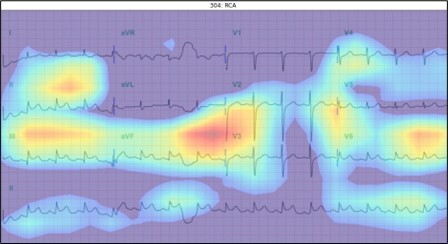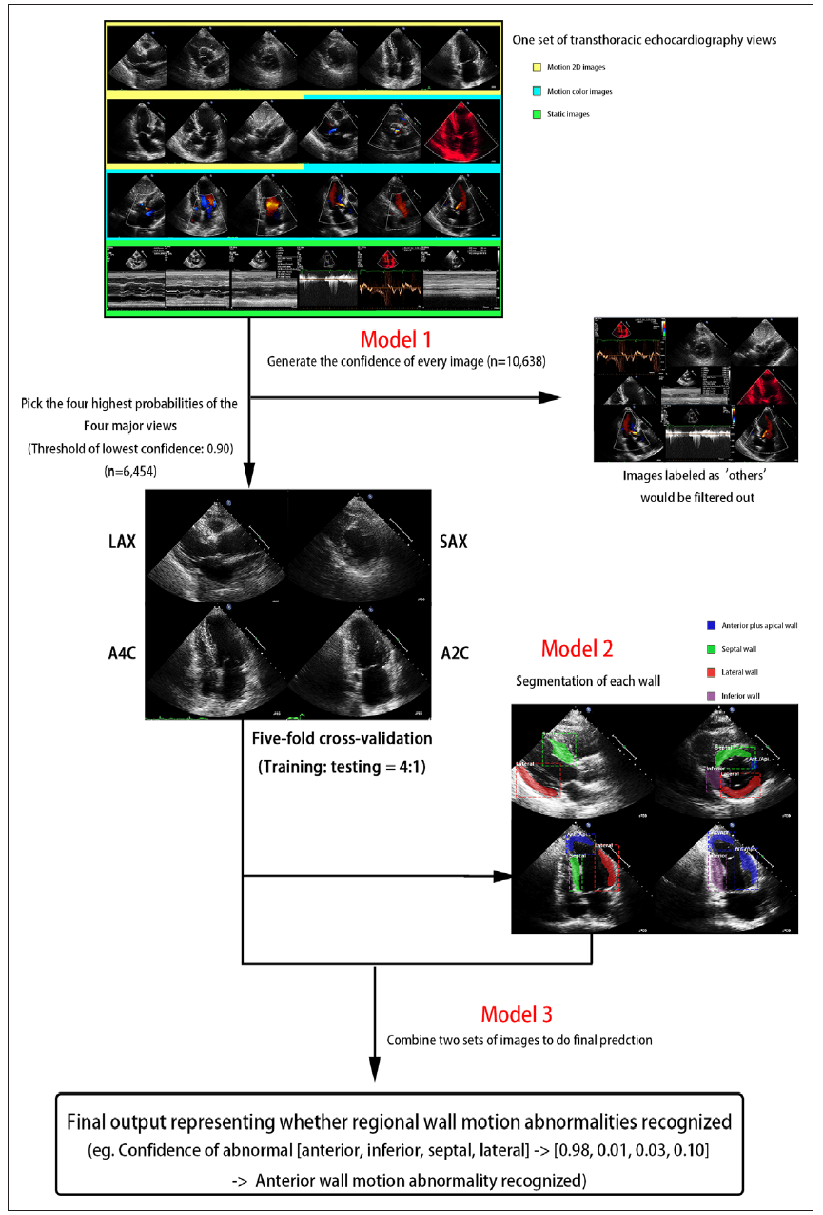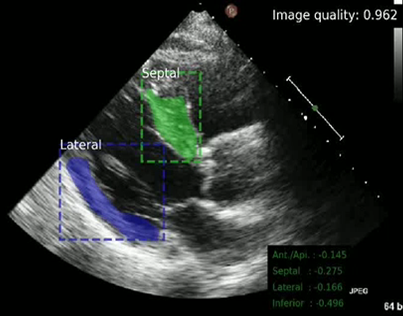Electrocardiogram-Based Prediction of Myocardial Infarction and an Automated Echocardiographic Interpretation Model
Mu-shiang Huang, Attending physician, Dept. of Internal Medicine
Automated electrocardiogram interpretation model for acute ST-elevation myocardial infarction: The model was submitted for verification testing conducted using 6590 prospective cases from National Cheng Kung University Hospital (NCKUH). The results indicated that the accuracy rate, sensitivity, and specificity reached 96.8%, 86.7%, and 96.9%, respectively, and the false positive rate was 3%. This model was used as a reminder system paired with the heat map visualization technique to assist with the interpretation of clinical results. After this model was introduced into clinical practice, a comparison was made between model-aided interpretation and non-model-aided interpretation according to the interpretation of actual electrocardiogram cases in the hospital’s emergency department by 30 medical students who had recently acquired such interpretation skills. According to the results, model-aided interpretation led to an increase of approximately 6% (78.9% vs. 84.3%; p = 0.008) in the accuracy rate on average.

Establishing an automated echocardiogram interpretation model: In clinical practice, clinicians often rely on transthoracic echocardiography to determine the state of a patient’s cardiac structure and function. In addition to the painless and noninvasive ultrasonography, echocardiography is generally the standard tool for further clinical analysis of cardiac function. With the development of deep-learning-based automated interpretation, deep learning models are increasingly applied in the automated interpretation of clinical images.
An automated echocardiogram interpretation model was established on the basis of over 10,000 echocardiographic data entries from NCKUH. The model can be used to automatically identify local systolic abnormalities, which are associated with cardiovascular disease and clinical prognosis, to support the early identification of potential coronary artery disease in patients.


